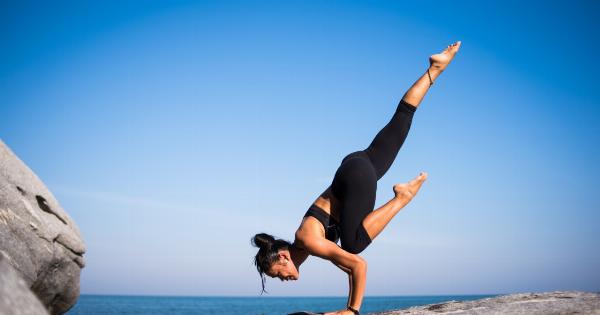Running and walking are great ways to stay fit and maintain a healthy lifestyle. However, when it comes to exercising at night, there are extra precautions one should take to ensure their safety.
Whether you are an early morning runner, someone who enjoys an evening walk, or simply need to be out after dark, it’s essential to prioritize your safety.
Importance of Being Visible
One of the key factors to consider when running or walking at night is visibility. It is crucial to make yourself visible to drivers and other pedestrians on the road. Here are some tips to enhance your visibility:.
- Wear reflective clothing: Opt for clothing items with reflective strips or invest in a reflective vest, especially if you frequently exercise in low-light conditions.
- Use a headlamp or flashlight: Illuminate your path and make yourself more visible by using a headlamp or carrying a flashlight. It will help you see the road ahead and ensure others can see you too.
- Choose brightly colored attire: Selecting clothes in bright, vibrant colors can also help increase your visibility, particularly when combined with reflective accessories.
Plan Your Route Proactively
Before heading out for a run or walk at night, it is essential to plan your route beforehand. Consider the following factors:.
- Well-lit areas: Choose routes that are well-lit with streetlights or areas that have a high volume of pedestrian activity. It significantly reduces the risk of any potential hazards lurking in the dark.
- Sidewalk availability: If possible, always use sidewalks instead of walking on the road. Sidewalks provide a designated and safe space for pedestrians, separating them from vehicular traffic.
- Parks and running trails: Look for parks or running trails that have lighting facilities. These locations are usually optimized for nighttime activities and offer a safer environment.
Stay Alert and Aware
Staying alert and aware of your surroundings is crucial for your safety. Take the following measures to ensure you are fully focused:.
- Avoid distractions: Keep distractions, such as listening to loud music or talking on the phone, to a minimum when exercising at night. Distractions can impair your ability to hear approaching vehicles or potential dangers.
- Be mindful of traffic rules: Always follow traffic rules and regulations, even if you think there are no cars around. This includes obeying traffic lights, looking both ways before crossing the road, and using pedestrian crossings if available.
- Trust your instincts: If you sense something is wrong or you feel unsafe, trust your instincts and take necessary precautions. It’s better to be cautious than to ignore any potential threats.
Bring a Buddy
Another excellent way to enhance your safety while running or walking at night is by finding a running or walking buddy. Here’s why:.
- Strength in numbers: Having a companion significantly reduces the risk of potential attacks or accidents. It also boosts your confidence and makes your workout more enjoyable.
- Emergency support: In case of an injury or any other emergency, your running or walking buddy can provide immediate assistance or seek help.
- Social interaction: Exercising with a friend allows you to engage in conversation, making the activity more social and enjoyable.
Carry Personal Safety Devices
Carrying personal safety devices can provide an extra layer of security during your nighttime runs or walks. Here are some devices you may consider:.
- Personal alarm: A personal alarm is a small device that emits a loud sound when activated. It can help deter potential attackers and attract attention from others nearby.
- Pepper spray: Pepper spray is a self-defense tool that can incapacitate attackers temporarily by causing irritation and temporary blindness. However, it is important to check local laws and regulations before carrying pepper spray.
- Mobile phone: Always carry your mobile phone with you and ensure it is fully charged. In case of an emergency, you can use it to call for help or notify someone of your whereabouts.
Be Mindful of Your Attire and Valuables
Consider the following tips regarding your attire and valuables when running or walking at night:.
- Avoid wearing expensive jewelry or showing off valuable items, as it may attract unwanted attention.
- Keep your mobile phone and other gadgets out of sight. Using them openly can make you an easy target for thieves.
- Carry minimal cash and only essential identification, leaving the rest of your valuable documents at home.
Inform Someone of Your Plans
Before heading out for a run or walk at night, it is advisable to inform someone you trust about your plans. Share details such as your intended route, estimated duration, and expected time of return.
This way, if anything goes wrong, someone will be aware of your whereabouts and can take appropriate action.
Trust Reliable Brands for Safety Gear
Investing in quality safety gear is essential for ensuring your well-being during nighttime activities.
When purchasing running or walking gear for low-light conditions, opt for trusted brands known for their durability and visibility-enhancing features. Research customer reviews and seek recommendations from other runners or walkers to make informed decisions.
Conclusion
Running or walking at night can be a delightful and peaceful experience. By following the safety tips mentioned above, you can significantly reduce the risks associated with exercising in the dark.
Prioritize your safety, make yourself visible, plan your routes carefully, stay alert, and be prepared for any situation. Remember, it’s essential to stay safe and enjoy your nighttime fitness routine to the fullest!.





























